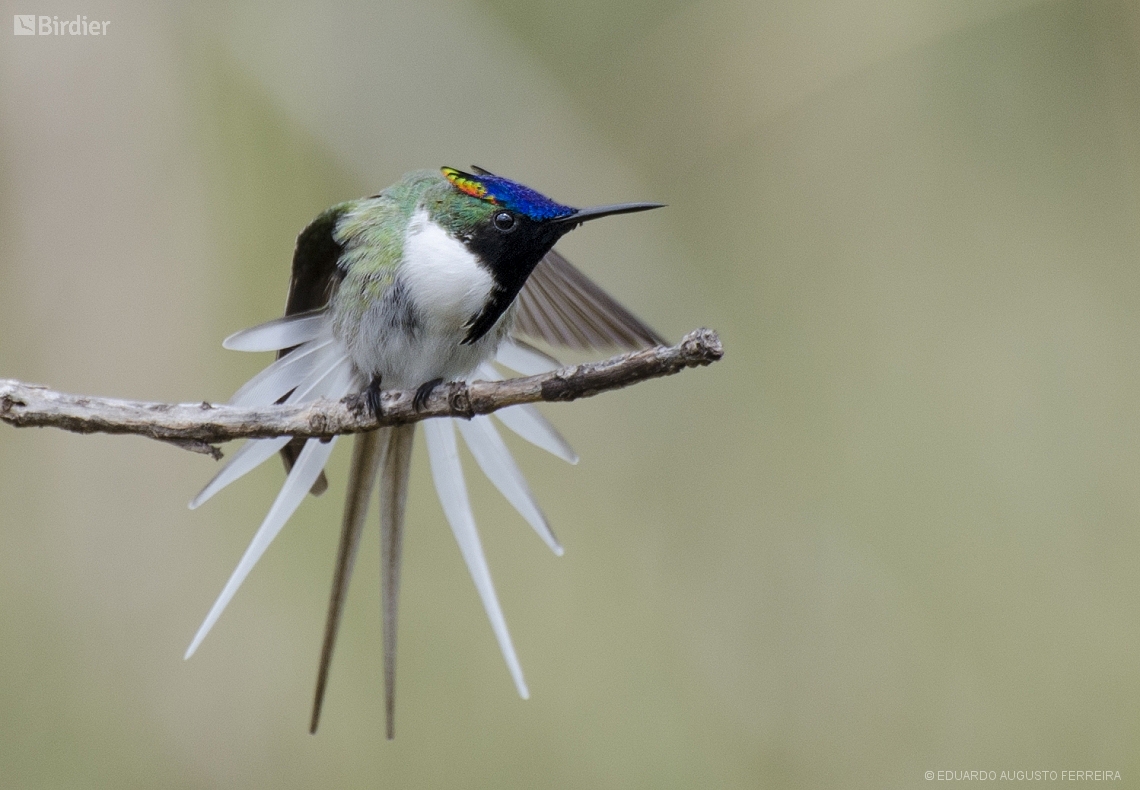Introducing the Horned Sungem, a gorgeous hummingbird boasting a dark blue crown and vibrant tufted “horns” in shades of red, blue, and gold.
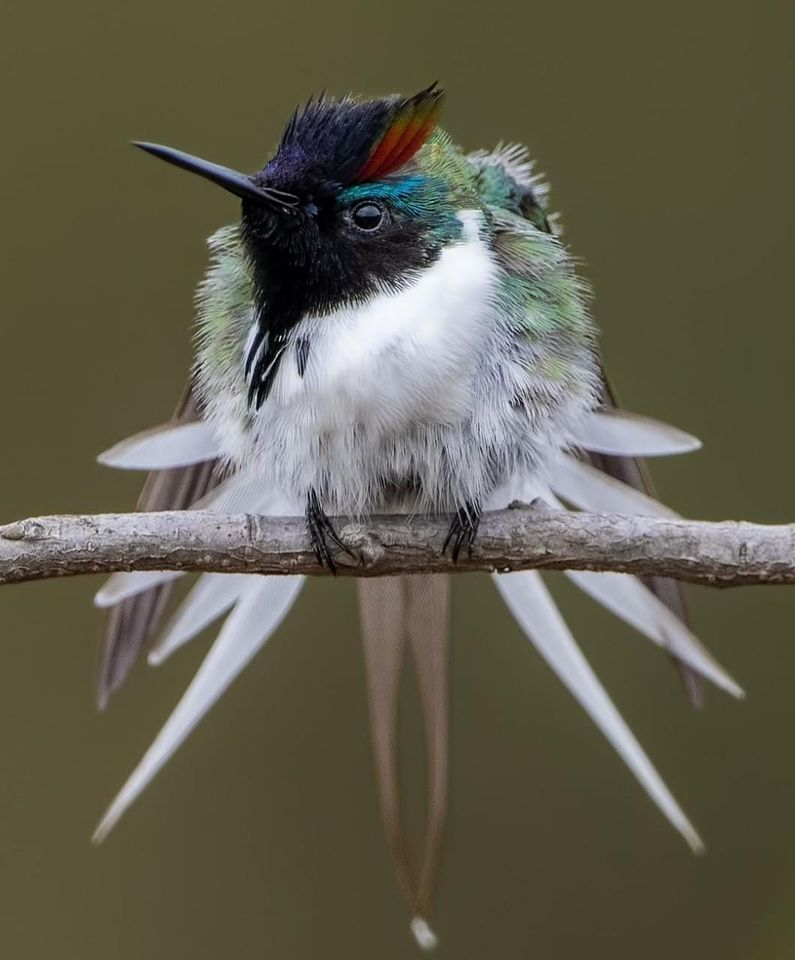
The horned sungem, scientifically known as Heliactin bilophus, boasts an impressive crown tuft that displays a stunning range of colors including red, blue, and gold. This tuft is situated on both sides of the bird’s iridescent dark blue crown. The upper parts of the bird are a lovely bronzy-green, while the throat and upper breast are black. The belly and neck’s sides, on the other hand, are white.
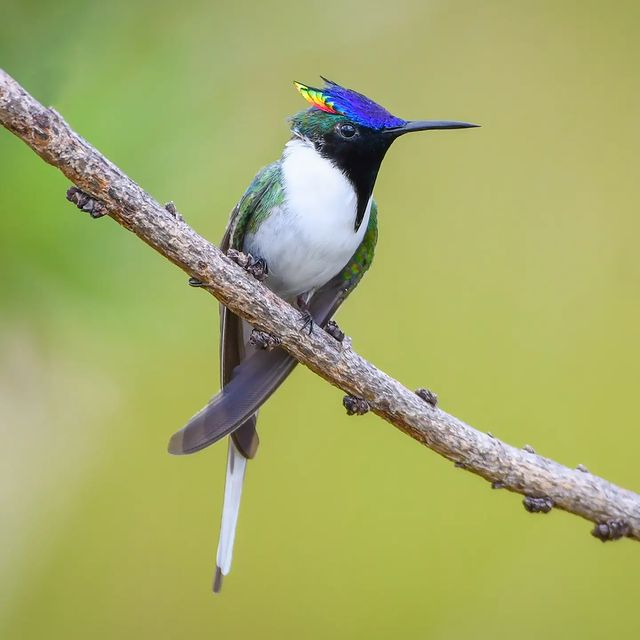
When viewed from below during flight, you can see the long and pointed tail of the male bird displaying a dark V on a white background. Meanwhile, the female bird shares a close resemblance to the male counterpart, albeit lacking the striking crown pattern and black throat.
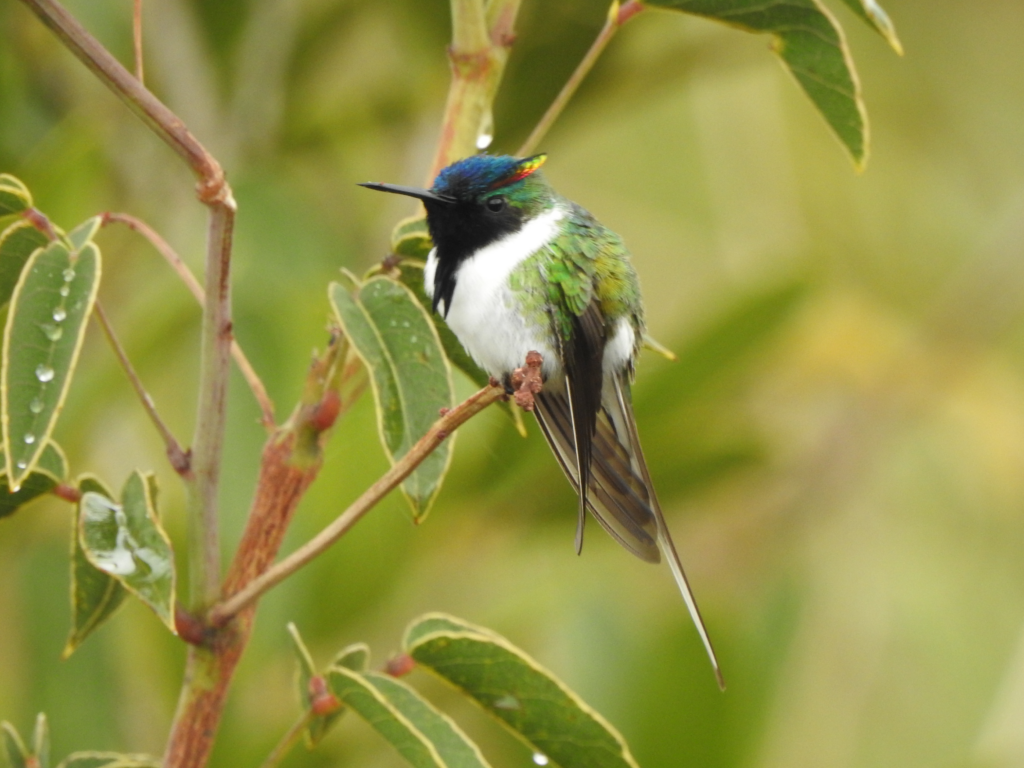
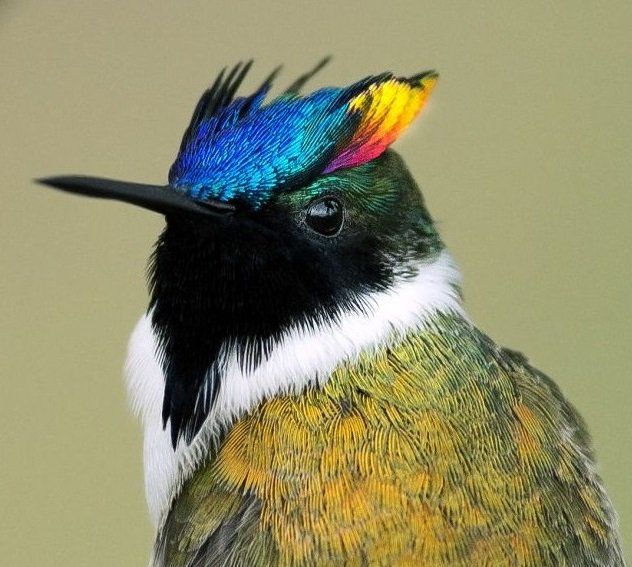
The preferred habitat of horned sungem birds includes dry savannas, dry grasslands, open forests, forest edges, and rural gardens. These small birds can be found at elevations ranging from sea level to 1,000 meters.
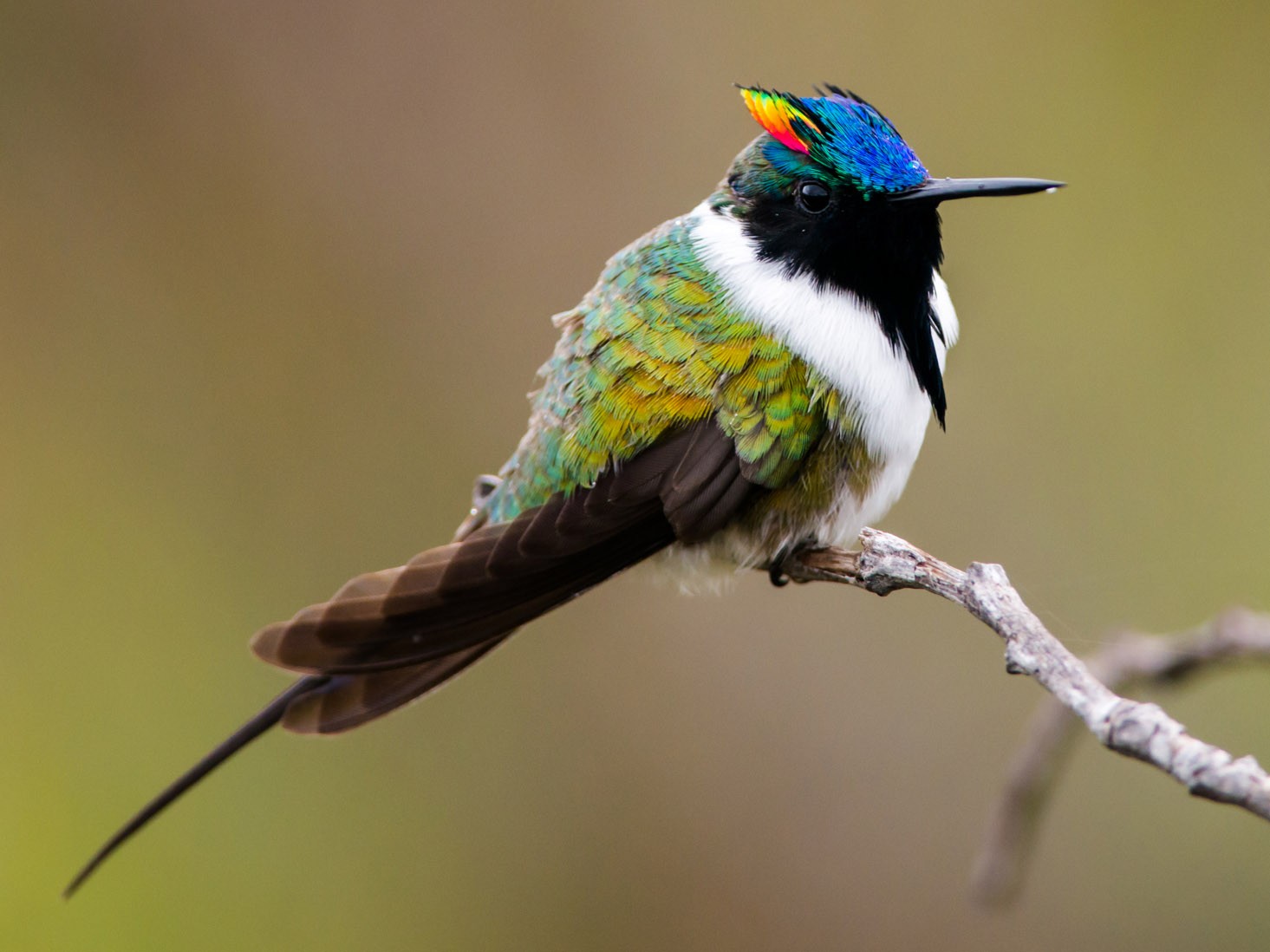
These avian creatures enjoy sipping on the sweet nectar of different kinds of blooming flora, specifically Caesalpinoideae, Vochysiaceae, and Asteraceae. Though, they won’t shy away from munching on tiny insects as well.
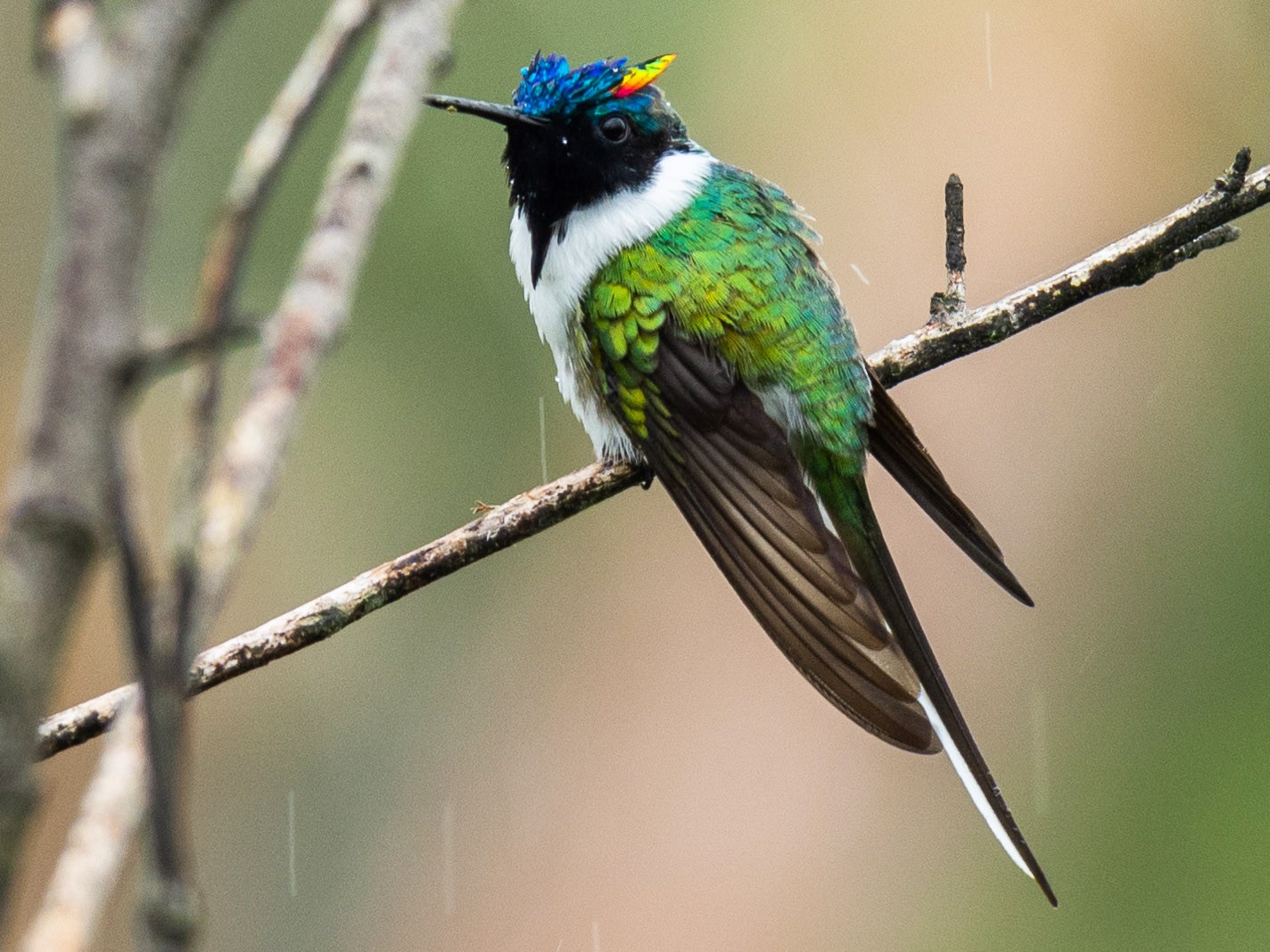
The nest of a horned sungem is constructed using delicate plant material and cobwebs, forming a tiny cup shape. Typically, it is situated on a small shrub and hangs about 1 meter above the ground. The female lays two eggs that she incubates for approximately 12-13 days without help. After this time, the chicks will leave the nest and begin flying between 20-23 days after hatching.
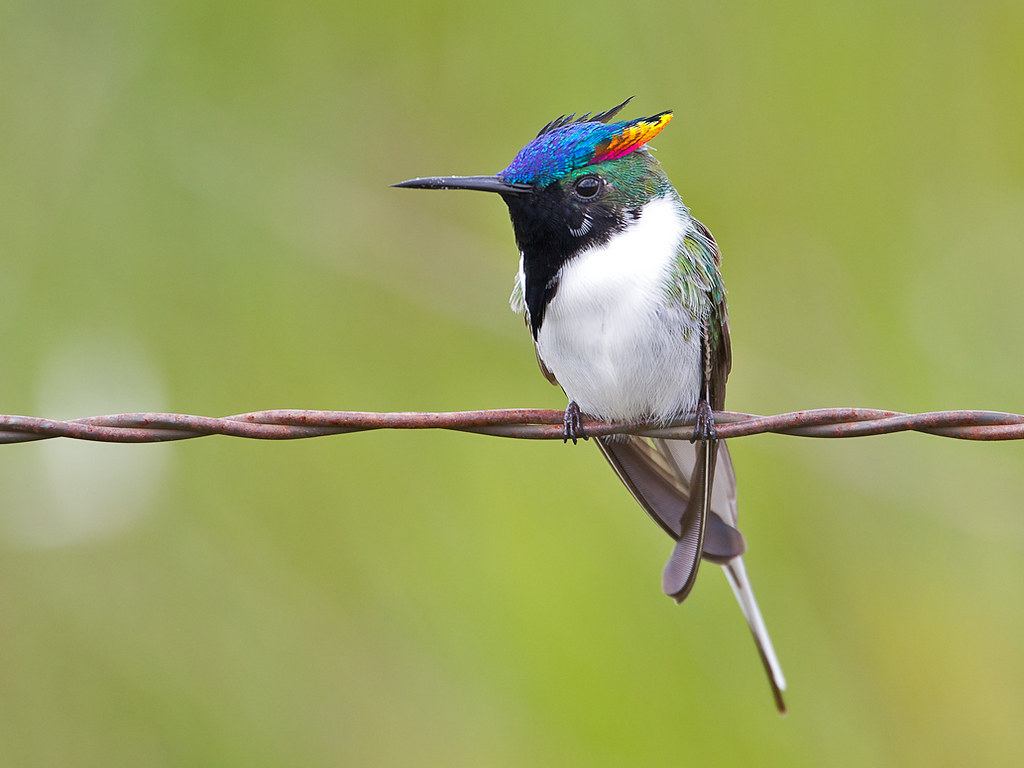
The species in question has a vast area of breeding and is considered to be rare. However, it is believed that the population is on the rise due to its ability to adjust to artificial environments like gardens and cultivated lands. Hence, it is labeled as ‘Least Concern’ (LC) on the IUCN red list.
